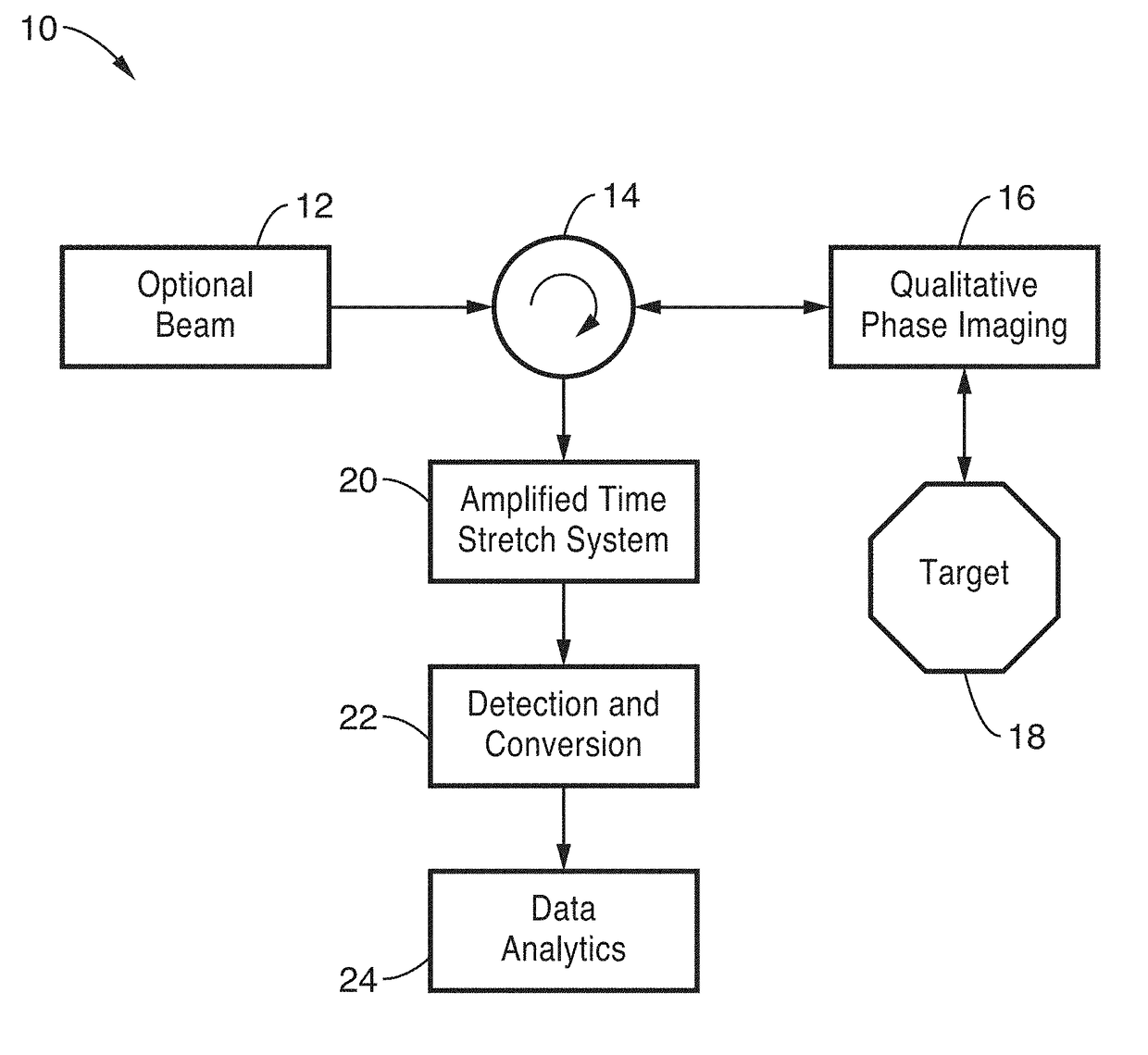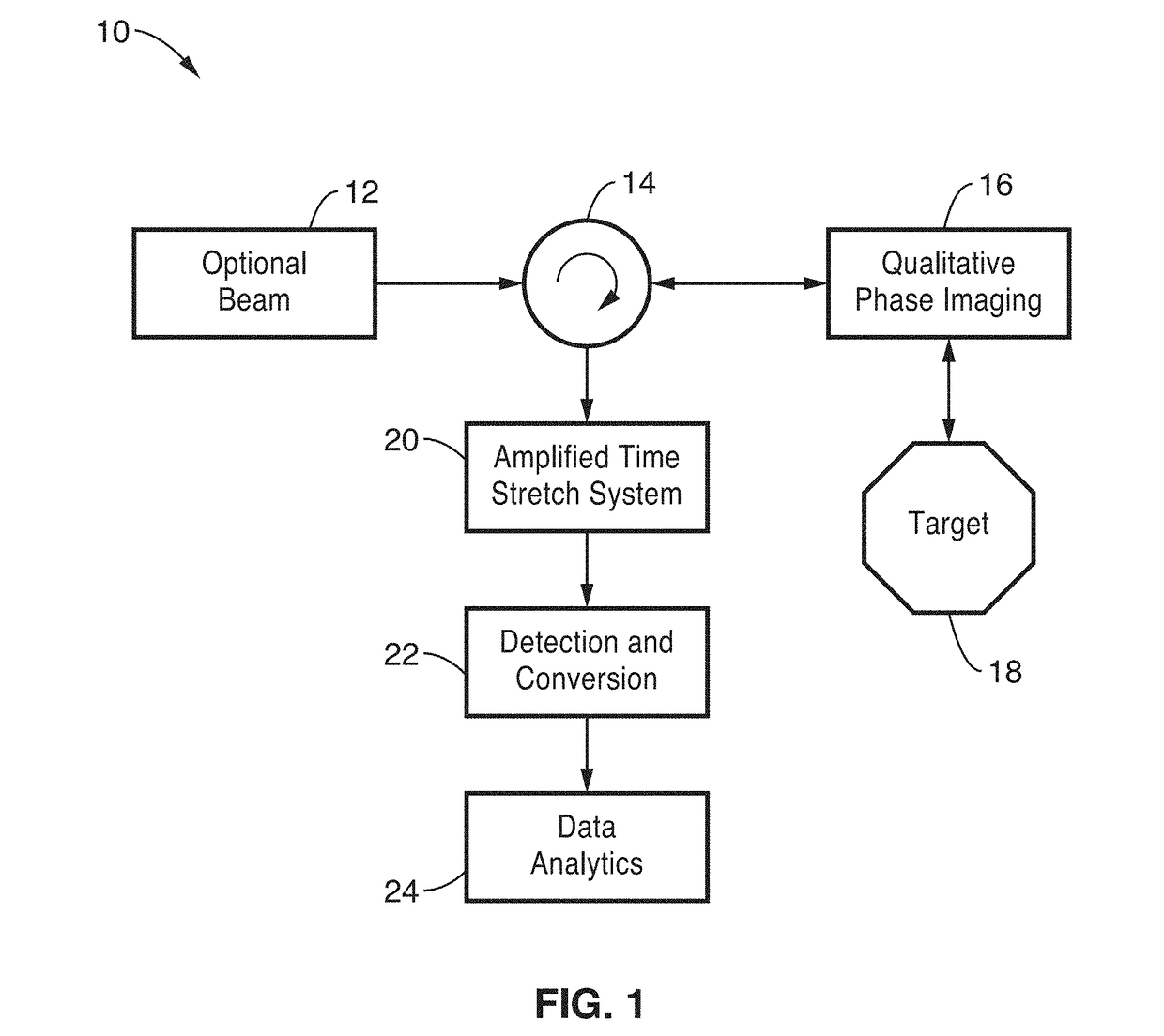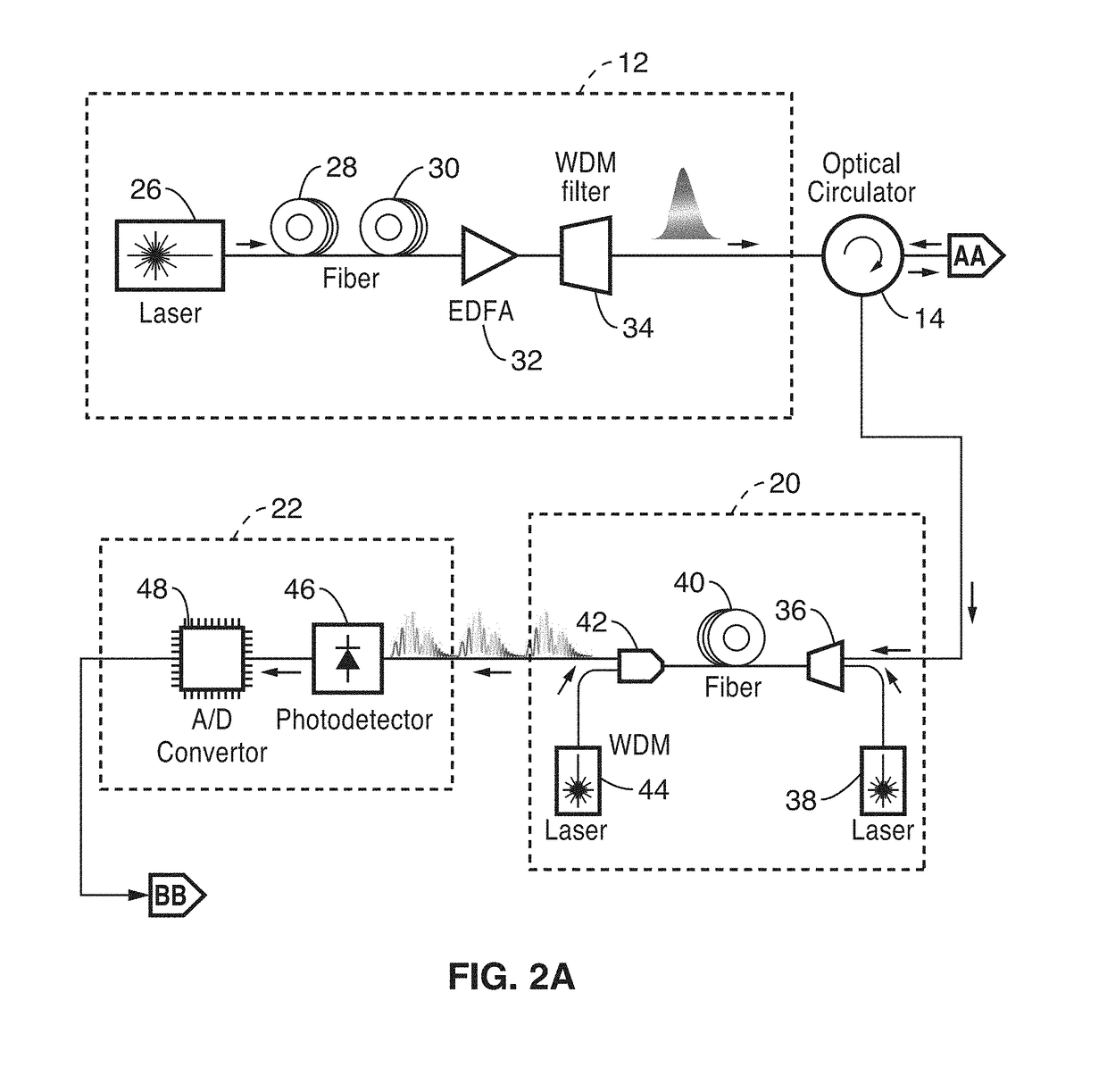Deep learning in label-free cell classification and machine vision extraction of particles
a technology of machine vision and label-free cells, applied in the field of label-free cell analysis, can solve the problems of drop in peak optical power and challenge of detection sensitivity
- Summary
- Abstract
- Description
- Claims
- Application Information
AI Technical Summary
Benefits of technology
Problems solved by technology
Method used
Image
Examples
Embodiment Construction
1. Introduction
[0027]Deep learning extracts patterns and knowledge from rich multi-dimensional datasets. While the deep learning paradigm is used extensively for image recognition and speech processing, its application to label-free classification of cells has not been exploited. The present disclosure illustrates a method and apparatus which benefits from deep learning.
2. Time Stretch Quantitative Phase Imaging
[0028]FIG. 1 illustrates an example embodiment 10 of a time stretch quantitative phase imaging (TS-QPI) and analytics system. The system generally comprises an optical beam system 12 coupled to an optical circulator 14, which is coupled to a qualitative phase imaging system 16 for interacting with target 18. Output from qualitative phase imaging system 16 is received at the optical circulator 14 and directed to an amplified time stretch module 20, with output to a detection and conversion module 22, which is coupled to a data analytics module 24. The following figure explains...
PUM
 Login to View More
Login to View More Abstract
Description
Claims
Application Information
 Login to View More
Login to View More - R&D
- Intellectual Property
- Life Sciences
- Materials
- Tech Scout
- Unparalleled Data Quality
- Higher Quality Content
- 60% Fewer Hallucinations
Browse by: Latest US Patents, China's latest patents, Technical Efficacy Thesaurus, Application Domain, Technology Topic, Popular Technical Reports.
© 2025 PatSnap. All rights reserved.Legal|Privacy policy|Modern Slavery Act Transparency Statement|Sitemap|About US| Contact US: help@patsnap.com



